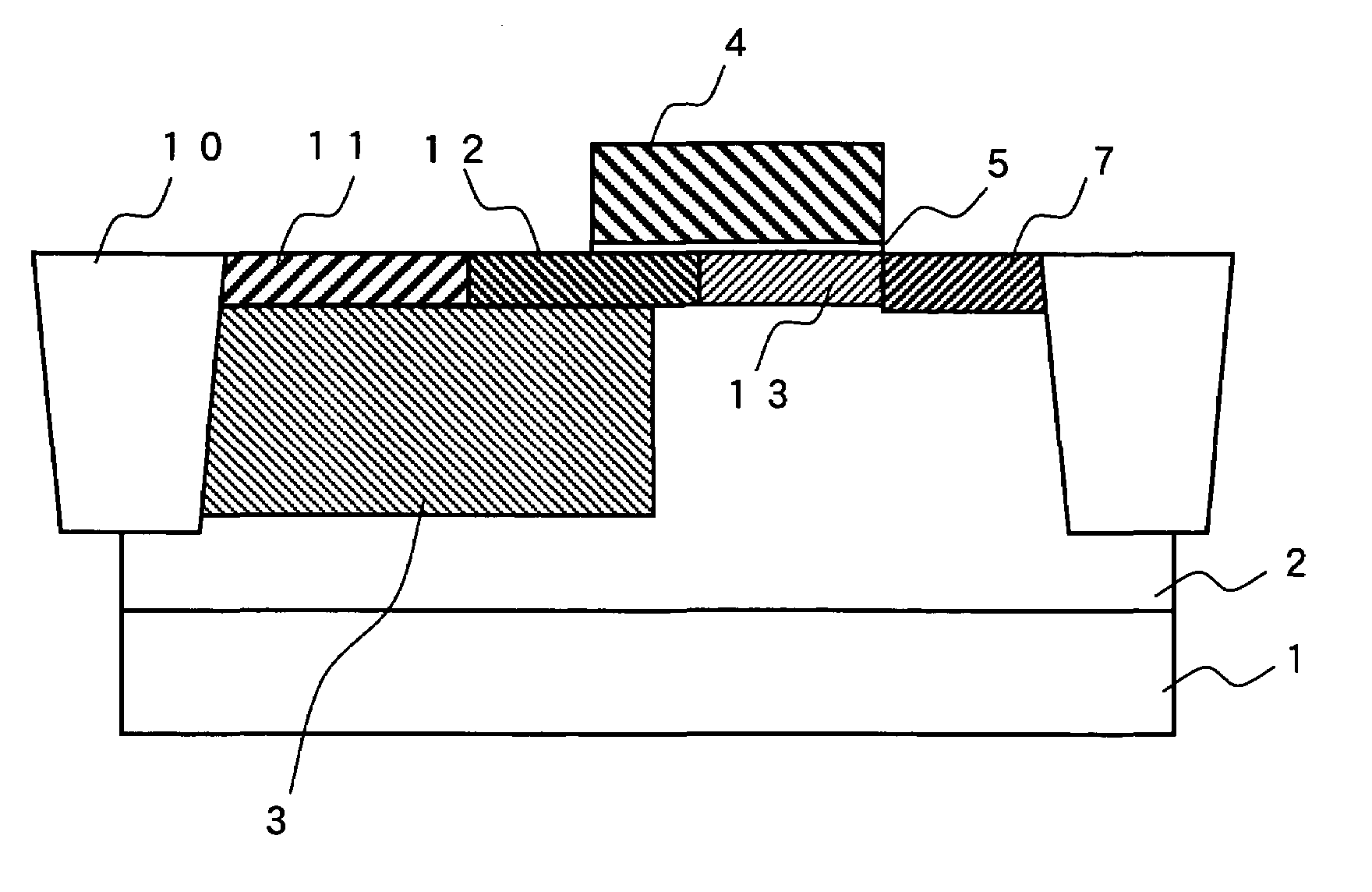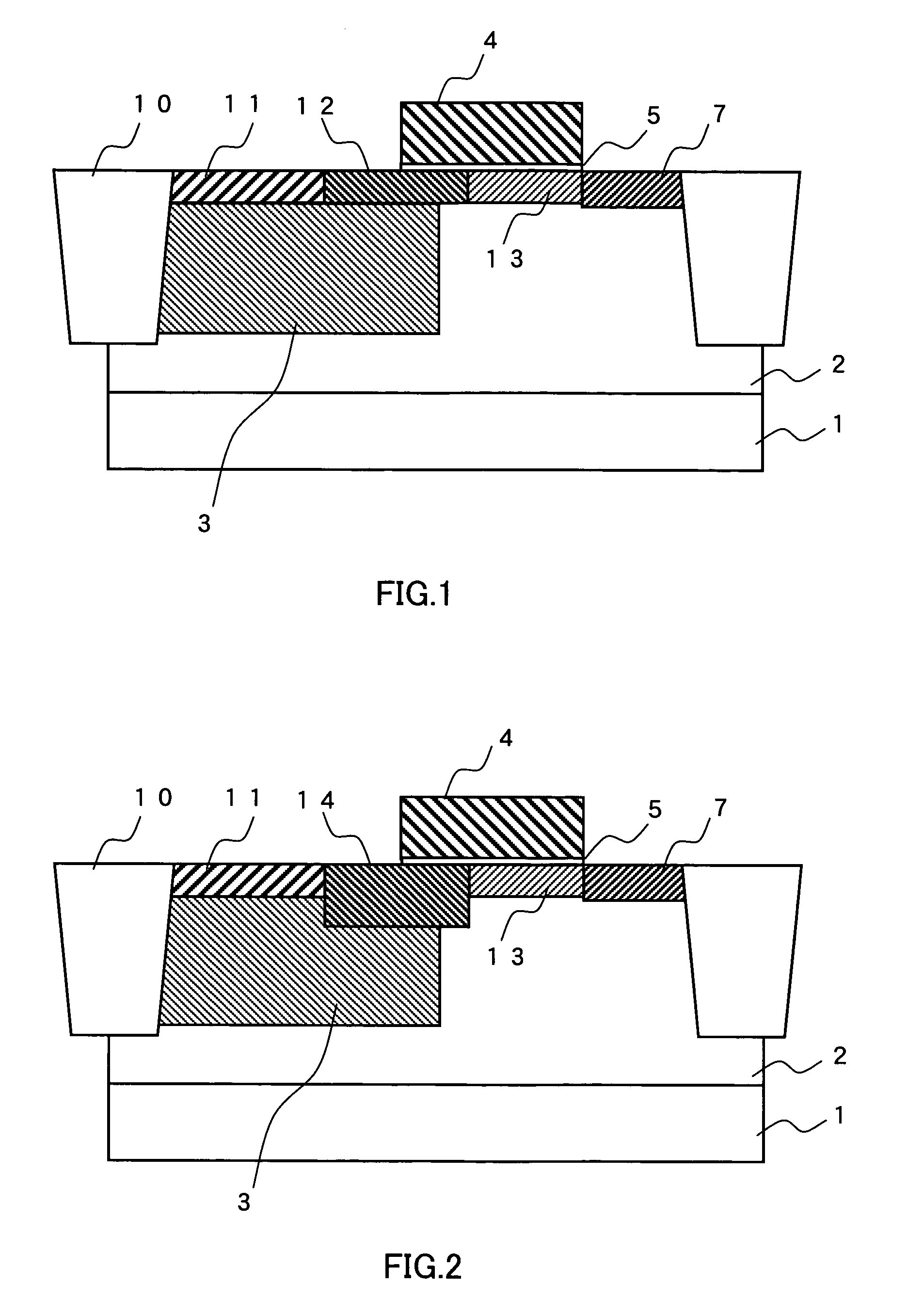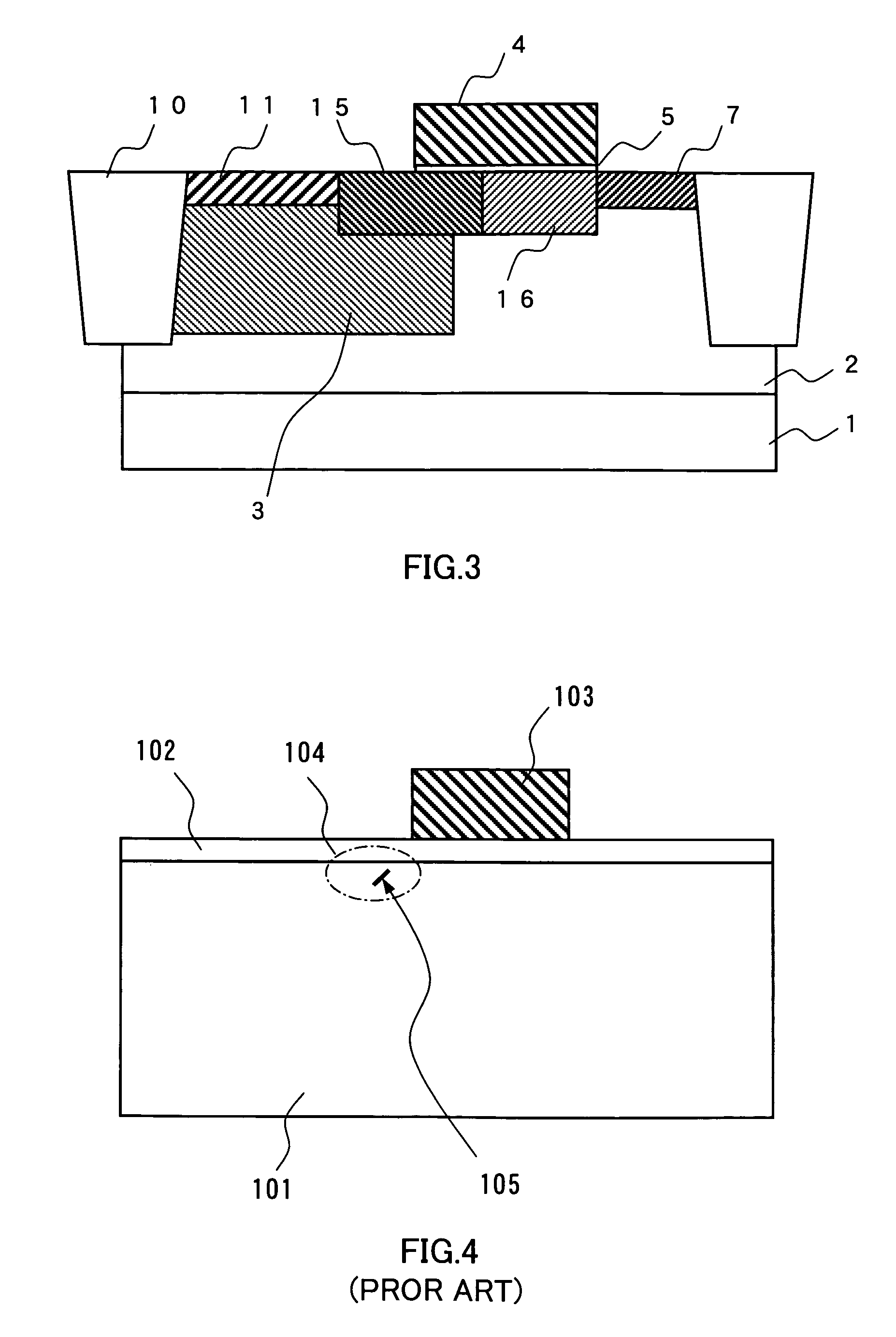Solid-state imaging device and method of manufacturing the same
a solid-state imaging and imaging device technology, applied in the direction of color television, television system, radio control device, etc., can solve the problems of reverse-direction leakage current at a pn, degrade the performance of the solid-state imaging device, and state imaging device, so as to suppress image defects sufficiently and improve the readout characteristic
- Summary
- Abstract
- Description
- Claims
- Application Information
AI Technical Summary
Benefits of technology
Problems solved by technology
Method used
Image
Examples
first embodiment
(First Embodiment)
[0022]FIG. 1 is a cross-sectional view showing a cell structure of a solid-state imaging device according to a first embodiment. Inside a P-well 2 of a Si substrate 1, a N-type photodiode region 3 for photoelectrically converting incident light is formed. A gate electrode 4 is disposed so that one edge thereof forms an overlapping region with the photodiode region 3. Adjacent to the other edge of the gate electrode 4, an N-type drain region 7 is formed. Under the gate electrode 4, a gate oxide film 5 having a thickness of not more than 10 nm is formed. An element-isolating portion 10 having a STI (Shallow Trench Isolation) structure isolates respective elements composed of a photodiode and a plurality of MOS transistors.
[0023]On the surface portion of the photodiode region 3, a P-type first region 11 having a P-type first concentration and a P-type second region 12 having a P-type second concentration are formed. In a region adjacent to the P-type second region 12 ...
second embodiment
(Second Embodiment)
[0027]FIG. 2 is a cross-sectional view showing a cell structure of a solid-state imaging device of a second embodiment. Identical reference numbers are used for components common to those of the first embodiment described above, and detailed explanation will be omitted for these components.
[0028]In this embodiment, a P-type second-A region 14 is formed in place of the P-type second region 12 of the first embodiment. The P-type second-A region 14 is characterized in that a bottom of the P-type diffusion layer is positioned deeper than bottoms of the P-type diffusion layers of the P-type first region 11 and the P-type third region 13. For positioning the bottom of the P-type diffusion layer of the P-type second-A region 14 deeper than those of the P-type first region and the P-type third region, the acceleration energy of ion implantation is increased. That is, when E1 denotes an acceleration energy of the P-type first region 11, E2A denotes an acceleration energy o...
third embodiment
(Third Embodiment)
[0030]FIG. 3 is a cross-sectional view showing a cell structure of a solid-state imaging device according to a third embodiment. Identical reference numbers are used for components common to those of the first embodiment described above, and detailed explanation will be omitted for these components.
[0031]In this embodiment, a P-type second-B region 15 and a P-type third-A region 16 are formed in place of the P-type second region 12 and the P-type third region 13 of the first embodiment. This embodiment is characterized in that bottoms of the P-type diffusion layers of the P-type second-B region 15 and of the P-type third-A region 16 are positioned deeper than the bottoms of the P-type first region 11. For obtaining this structure, the energy of ion implantation during formation of the P-type diffusion layers is increased so as to position the bottoms of the P-type diffusion layers of the P-type second-B region 15 and of the P-type third A region 16 deeper than the ...
PUM
 Login to View More
Login to View More Abstract
Description
Claims
Application Information
 Login to View More
Login to View More - R&D
- Intellectual Property
- Life Sciences
- Materials
- Tech Scout
- Unparalleled Data Quality
- Higher Quality Content
- 60% Fewer Hallucinations
Browse by: Latest US Patents, China's latest patents, Technical Efficacy Thesaurus, Application Domain, Technology Topic, Popular Technical Reports.
© 2025 PatSnap. All rights reserved.Legal|Privacy policy|Modern Slavery Act Transparency Statement|Sitemap|About US| Contact US: help@patsnap.com



